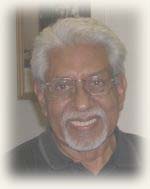The Grapevine Art & Soul Salon

WorldVoices: Ravi Kumar, Host
There is More to Us Than Can Be Measured by Science Alone
Views about the existence of God or a god or gods have been debated intensely in the past century. I read that the great scientist Stephen Hawking has come to the conclusion that God does not exist. He has decided that no scientific evidence can prove the existence of God. Yet I am told by many other scientifically-minded people like Einstein and Pauli that there is a God.
Scientists have discovered laws that govern this universe. They keep discovering new things. I want to know who or what made those laws? Those forces? Gravity, electro-magnetism. Strong and weak forces. Are they man-made? Humans have discovered them. But have we made them? Some force must have made them. Who or what is that?
Traditional views attempt to answer the question "Who?" and imagine god(s) shaped in the image of humans (or believe that humans are made in the image of God). Three of the world's major religions, the Abrahamic ones, envision one almighty God in the image of a man and in the role of Father or Ruler of Creation. Buddhists do not personify God but rather move toward a state of mind that we call enlightenment (nirvana). The most complex of the god-imaged systems is Hinduism, the tradition I come from. The diversity inside Hinduism is obvious at first in the fact that it has no founder: no Buddha, Muhammed, or Jesus.
Hinduism is not an "organized" or institutionalized religion. Priests follow and teach from scriptures as varied as the Vedas, Puranas, Bagavad Gita, Ramayana and Mahabharata. The gods are many and varied: Brahma, Vishnu, Shiva, Ganesh, Krishna, Rama and, in female forms (Shakti), as Parvati, Durga, Kali, Lakshmi, to name only a few.
Hindu religion is so polytheistic that its general attitude is not to look down on any way that humans may worship God. All views tend to be accepted. And even though Hinduism imagines many gods, male and female, associated with a diversity of concerns in human life, it also celebrates the principle of unity in that diversity and calls it Brahman. The world is based in Brahman, and life at death returns to Brahman to be created again. Brahman is formless. Its counterpart within the world of created forms is called Atman. Sometimes the image of a wheel is used to depict the relationship: The outer rim is Brahman, and the center which holds the spokes is Atman, often translated as Self or Soul. The spokes show the interactions between Brahman and Atman.
I think perhaps that Hinduism (and Buddhism, which derived from Hinduism) can be synthesized with modern science more readily than Judaism, Christianity, or Islam precisely because there is an awareness in it of impersonal forces that coincide in many ways with the language of science in terms of principles and forces and relations between the visible and invisible. Western writers have occasionally pointed that out.
Here is a statement from Aldous Huxley referring to Vedanta in his article "The Minimum Working Hypothesis" (Vedanta and the West, California: Chatto and Windus, 1944) where he condenses what he defines as the underlying unity of religious questing into these basic principles (sometimes called the perennial philosophy):
That there is a Godhead, Ground, Brahman, Clear Light of the Void, which is the unmanifested principle of all manifestations.
That the Ground is at once transcendent and immanent.
That it is possible for human beings to love, know, and from virtually, to become actually identical with the divine Ground.
That to achieve this unitive knowledge of the Godhead is the final end and purpose of human existence.
Whatever forces shaped the conditions on earth such that life, as we know it, could be created, placing the earth at a precise distance from the sun with a precise tilt and orbit and with air, water and land mass containing all natural resources to help in the creation of life, we are still left wondering, imagining, speculating, experimenting, loving, grieving, renewing and reproducing ourselves. There is much more to us than can be measured by science alone.
My purpose is not to hold any religion higher than any other, but to try to find language that allows us to converse more clearly as we try to synthesize belief with science and as we try not to throw away images and stories and teachings that have served humanity well over several thousand years. I have heard that Einstein himself valued imagination above information, recognizing apparently that without imagination, we would not know what to look for in information. We need to be able to shed ideas that have lost validity and creativity but not to be arrogant in holding science over arts and spiritual teachings that continue to contain the great flow of imagination that characterizes human existence.
WORLD VOICES ARCHIVES
World Voices: Developing Cultural Competency
WorldVoices: My India and My USA
WorldVoices: ABCDs and Cultural Differences
WorldVoices: Memories, Stories, Values of My Ancestors
WorldVoices: Thoughts on What It Means to Be Human
WorldVoices: Lorca's "Poem of the Bull"
WorldVoices: Tibet, China's Treasure Basket
WorldVoices, Saying Yes to Tradition and Change
WorldVoices, Coomaraswamy's The Dance of Siva: Essays on Indian Art and Culture
An Extraordinary Day in the Life of a Fighter Pilot
Copyright 2015, Barbara Knott. All Rights Reserved.